Runway Theatrics Part II, Stolen Wearables, and The Geopolitics of Supermodelism
good luck have fun!
It’s been a minute! I had no intention of keeping anyone waiting, and in fact, I really had no shortage of material to cover. Paris Fashion Week wrapped up in September and ever since there has been an overflow of interesting snippets covering fashion, technology, and the social economy connecting it all. This issue we’re covering the Runway Theatrics Part II, Stolen Wearables, and The Geopolitics of Supermodelism. Let’s get into it.
Runway Theatrics Part II: Now, and 20 Years Prior
Each year, the limits of technology and production value during Paris Fashion Week seem further pushed by the couturiers, and this fashion week was no different.
Undercover SS24 debuted a miraculous collection, closing the show with dresses constructed into live butterfly terrariums. Each one inlayed with a microecosystem of florals and heat lamps, illuminating the underground car-park venue among shattered (but lit) chandeliers, encased with a transparent shell and a layer of angelic tulle fabric.
It was a hauntingly beautiful parade of pomp and circumstance, one of the stand-out moments for PFW and a momentous achievement in both fashion and technology. Online, discussions continued to weigh the validity of a “viral moment” on the runway. While most praised this display of performance in craft by Undercover, critics of runway theatrics seem to be positioned on a blurry line. Has this phenomenon developed as a result of the incessant need for show attendees to produce online content in order to “sell” the brand? Would these moments still occur without the existence of cell phones and social media?
The answer is yes! A look back in fashion history reminds us of the design minds that have been “performing” since the mere existence of the runway we know today. I was reminded of one such performance by Imitation of Christ Spring/Summer 2002 on Instagram this week (isn’t it poetic how these things make their way back to me at the exact right time?).
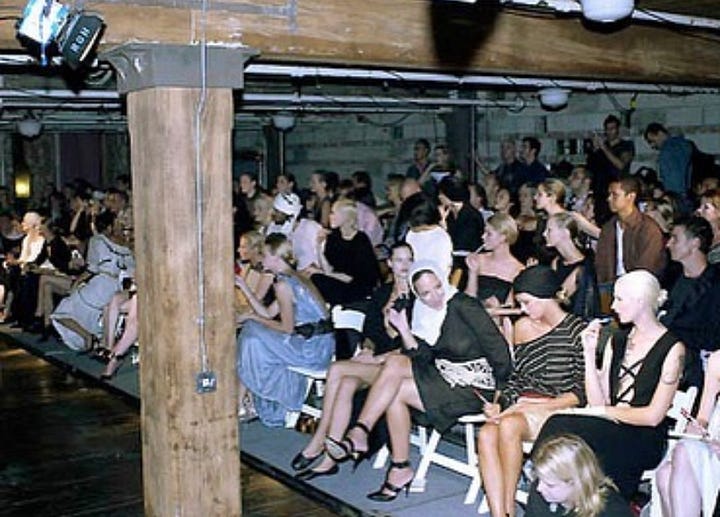
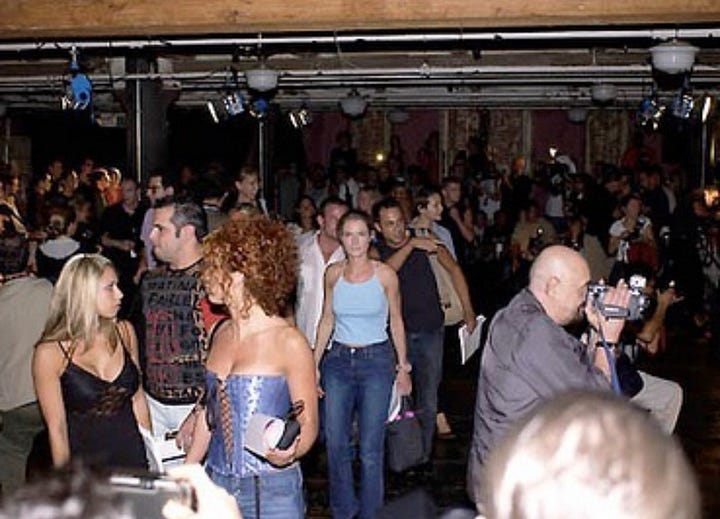
Creative director (and fashion’s It-Girl) Chloë Sevingy with designers Matthew Damhave and Tara Subkoff believe fashion is one-third clothes and two-thirds performance, Vogue reported at the time. For their Spring/Summer show, models switched places with viewers and took on the roles of journalists and photographers.
With RuPaul’s “Supermodel, work!” playing at full volume as a backdrop, editors were lined up and ushered into a makeshift runway flanked by an audience of models equipped with cameras, pad, and paper.
As comments like, “Move along, please!” and “She’s gained so much weight"!” blared through the speakers, the models-turned-journalists took notes and studiously ogled the press parade.
In this case, the performance of the runway was much more about the relationship between models and journalists, and much less about the clothes themselves. And - observe - nary a cell phone in sight, social media for naught.
In an age where the currency of the Internet seems so monolithic to an emerging generation of intellectualized fashion minds, it can feel like a breath of fresh air to reminisce on the ways designers of the past are not that different from the contemporaries. Maybe designers’ motivation here is not one of virality, but one of connection to human performance: an act we have shared with each other for thousands of years.
The Geopolitics of Supermodelism
This year, Apple TV+ released a four episode documentary outlining the legacy of the women known as the iconic Supermodels of the 90s. The doc tells the story of their rise to notoriety, the effects of their fame, the cultural power they held, and the dark sides of the industry. Episode 3, “Power” examines the power imbalances between the Designers, Models, and their management.
At the time, models were heavily critiqued by their agencies and many felt they didn’t have a voice in their own careers. They were often utilized for fittings and runways, and then discarded when it came to advertising, despite promoting the brands they worked for. Naomi Campbell, Cindy Crawford, Linda Evangelista, and Christy Turlington banded together and became the faces of the decade. Their individual identities became an integral part of their modeling “brand”.
Acting almost as a union, they demanded fair treatment and compensation from the designers they worked with. This shook the hierarchy of the entire industry, so the designers began to look elsewhere for their models.
Following the fallout of the Soviet Union in 1991, Russia and many Eastern European countries faced economic instability for nearly a decade as a result of the lack of public resources. Poverty was rampant and the average life expectancy of the area plummeted. The result was a sense of desperation among the population that often warranted a need for escape.
Many designers believed that spectators who are distracted by the celebrity of a Supermodel are unlikely to pay attention to the designer’s work. Miuccia Prada in particular didn’t want the models to be more famous than the designers themselves. She wanted to eliminate “distraction” on the runway, and the result was a homogenization of models, with a focus on uniformity in race, height, and shape, raising concerns about diversity and representation. To this day, what came to be known as the “Prada Effect” can still be felt on many runways.
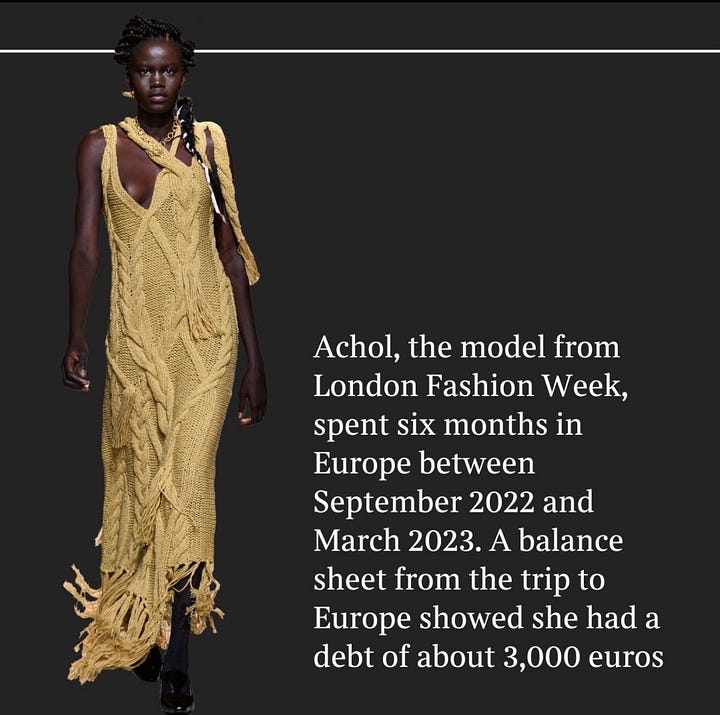

In fact, an October article published by The Times investigated how modelling agencies recruit refugees from one of the world’s biggest camps. Twitter user @ muglare weighs in,
People in positions of power, abusing said power to subject poor people to even worse living conditions is a tale as old as time but it still makes me sick to my stomach to read about the young women being taken advantage of for an industry trying to disguise greed as inclusivity.
Unfortunately it seems the benefits of modernity have little diminishing effect on the relationship between exploitation, fashion, and geopolitics.
Balmain’s Stolen Collection
Often we hear reports of designer’s collections stolen, that is, the intellectual property - the designs themselves. This Paris Fashion Week, Balmain experienced a literal theft of the collection. Less than two weeks before their debut, more than 50 garments from the collection were stolen when a delivery truck on its way from the airport to the company’s headquarters in central Paris was hijacked.
Olivier Rousteing, the brand’s creative director announced the tragedy on Instagram, stating that Balmain and its suppliers will work days and nights to remake the missing garments.
Behind the scenes images emerged depicting the craftsmanship that went into constructing each look.
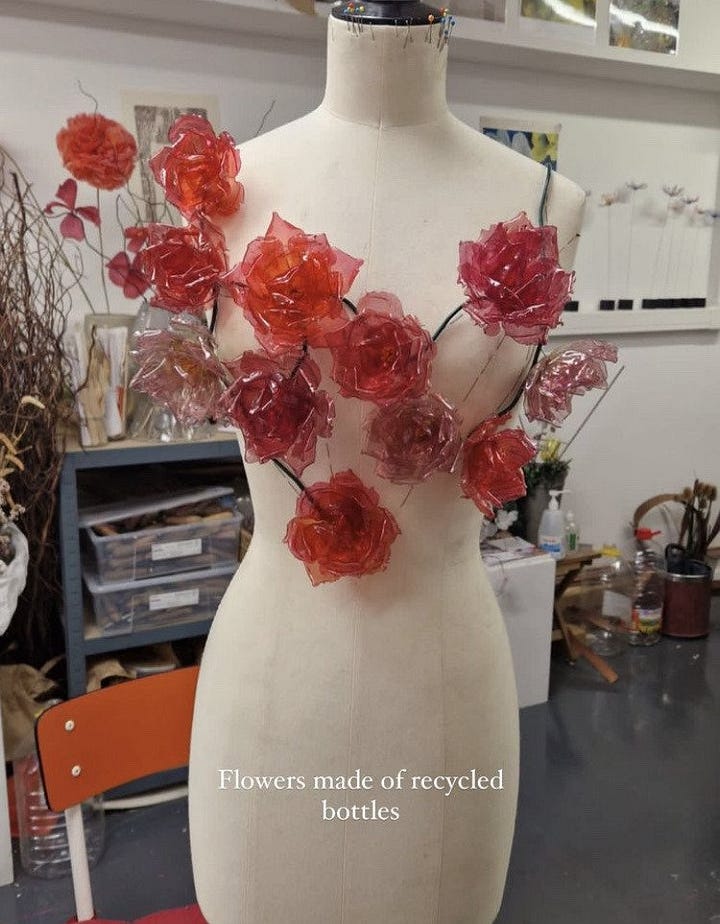

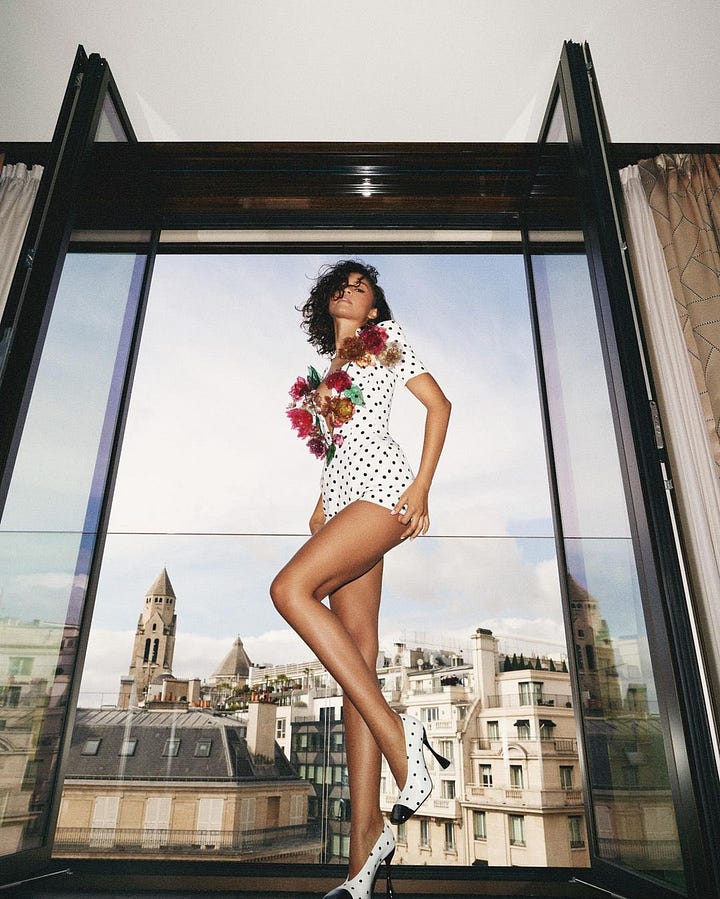
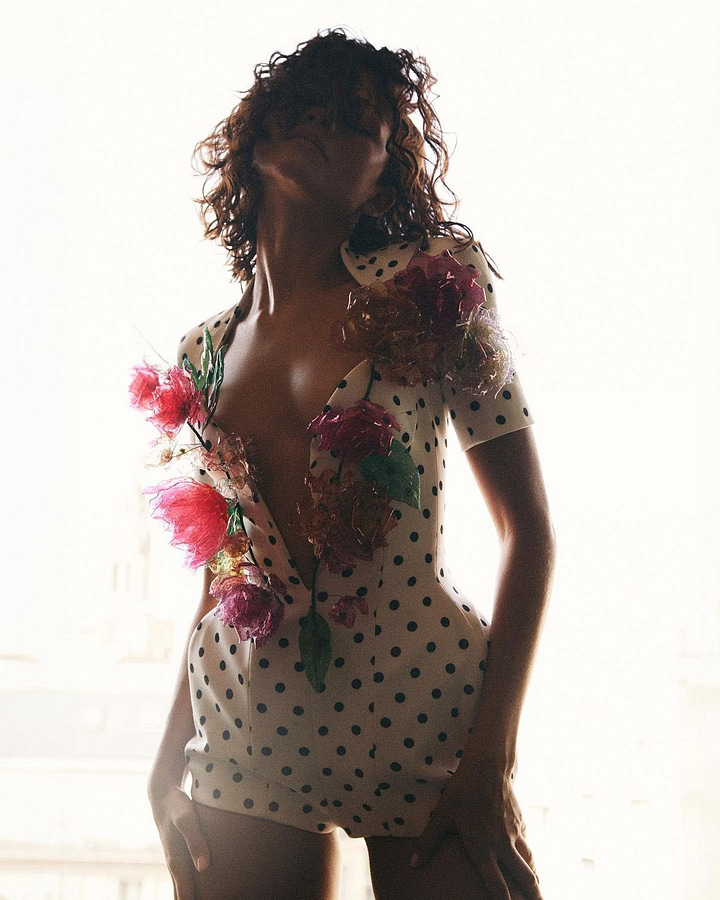
At the show, Rousteing lamented about the loss, noting entire sections of tailoring and denim had now been omitted.
Despite the setbacks, the collection debuted with overwhelming positive response. The couture-caliber garments stunned viewers and critics alike.

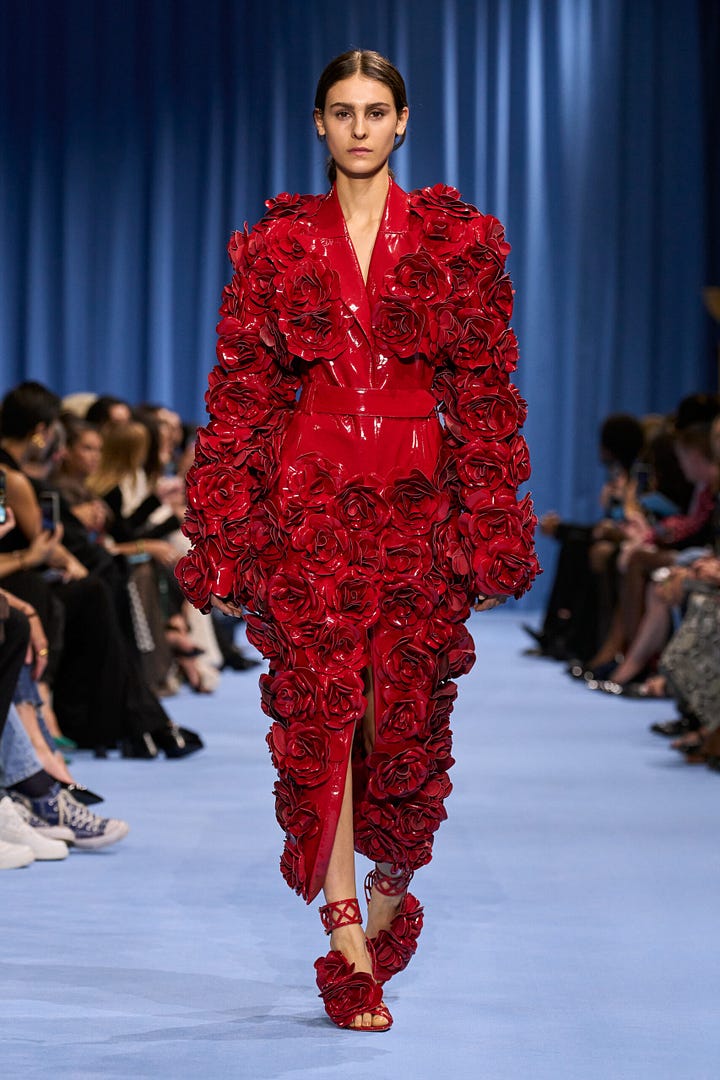
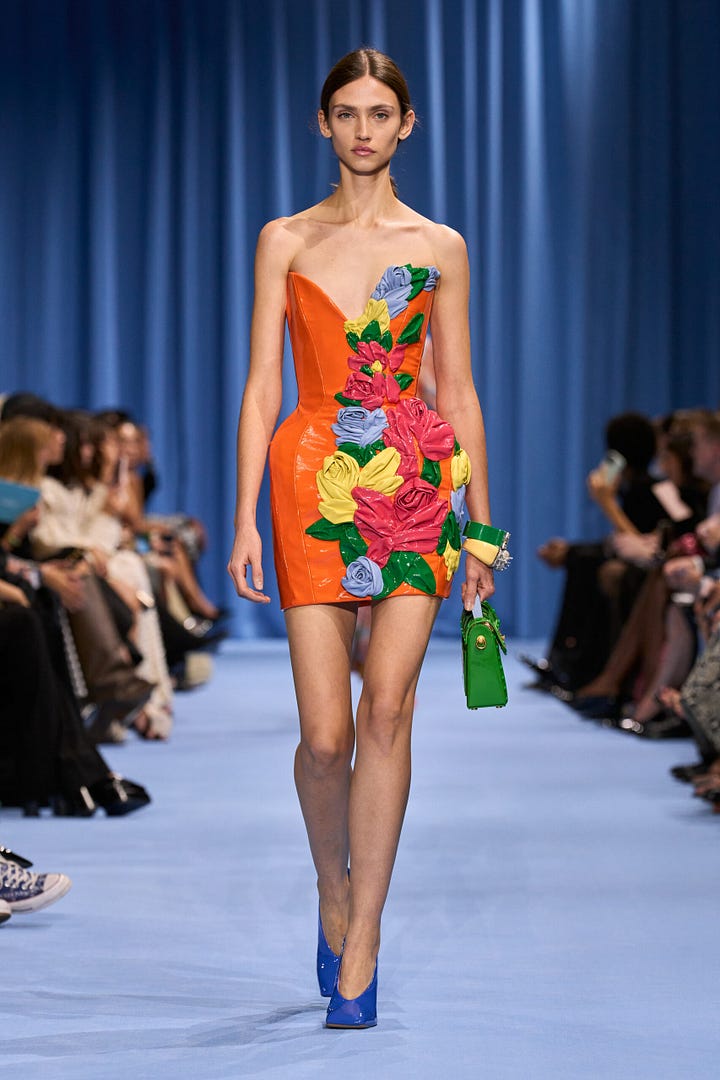

Observers commented, “no wonder why Balmain truck was robbed for this collection,” citing how spectacular the turnout was.
Tidbits
Honorable mentions in bite-size portions.
Savage X Fenty vs Shein
Rihanna's prolific lingerie brand Savage X Fenty was given a worse ethics rating than infamous fast fashion mogul Shein - and fans are shocked. Read more by Catherine Shuttleworth for indy100.
The Office Siren is back in Vogue
The ‘Office siren’ trend, inspired by the 90s/2000s dweeb-core aesthetics of The Devil Wears Prada and contemporary street style of model Bella Hadid, make this forgotten fashion chic — and sexy — again. Read more by Brooke Kato for the New York Post. Watch more by Youtuber SACHEU on the 2000’s Office Siren Makeup Tutorial
Fast Fashion is Social Media
The reason you can't escape those Shein and Temu ads on Instagram is because nearly 33% of Facebook/Meta's ad revenue growth this year is from those two companies alone. Shein and Temu provided nearly a third of Meta’s revenue growth in the nine months to September, or almost $3 billion.
“No one likes to say this out loud, but for all the talk of Sino-American decoupling, China-linked e-commerce platforms are muscling into American business with the same shock-and-awe tactics that TikTok, a video app, used to besiege social media.” More by the Economist.
Propagandizing Fashion School
The New York Times published a piece on Israeli professors, students, and graduates of Shenkar College that have joined forces in the classroom to make equipment for the security forces. The journalist positions the work as sympathetic to the Israeli war efforts; a publication move that comes as highly disappointing to the younger generation of the fashion industry - most of whom are vocally in support of Palestinians and their fight against genocide.
No Publicity Is Bad Publicity
A Tinder Date. Stolen Shoes. An Internet Sleuth. Viral on TikTok. And now… the #1 item on the Lyst Index. After Lexus (@ nextlevellexuss) had her Margiela Mary-Jane Tabis (a shoe that retails for ~$1000) stolen on a first date, she shared her story with the world. After a whirlwind of virality, her shoes were eventually returned and the perpetrator publicly shamed on social media. The publicity was enough to land this item in the #1 spot on the Quarter 3 Lyst Index.
Rob It to Get It
Distance Athletics, a Paris-based running store, had an interesting promotional concept to get consumers excited for the 2024 Summer Olympics - anything in the store is yours (FREE!) as long as you can outrun the security: French Olympic sprinter Méba-Mickaël Zézé.
Christian Cowan’s Runway Fur Ball
A model wearing a giant fur ball with no visibility gets lost on the runway for Christian Cowan this Paris Fashion week, while accompanied by vocalist Sam Smith. A performance that was reviewed here by guest writer and world-renowned place-goer and thing-doer, Brumbpo Tungus.
Finishing Touches
27 students from different fashion schools completed the finishing touches on the crinoline final look during Kimhēkim Spring 2024 Show. Twitter user @ italybutoncrack weights in:
Technically, they just clipped bows and did nothing much. But it also sort of touches on what the eye doesn’t see. Fashion students work hard day and night for designers and brands as interns and they’re barely paid, IF they get paid even, and some are even graduates, but a lot of people outside of the industry don’t even know about them. The skeleton acting like the creative director’s design, and the 27 interns who work their asses off to make sure that it’s finished off perfectly. It’s giving them light, almost.
Chalamet Stranding
While on a press circuit to promote his upcoming film Wonka, Timothée Chalamet - wearing Junya Watanabe SS24 - met the legendary video game designer Hideo Kojima, known as the mastermind behind the Metal Gear series and Death Stranding. They were joined by Wonka director Paul King, also known for his directorial credit on Paddington, of which Kojima is an avid fan.
So much so, that King presented Kojima with an additional parting gift: a Wonka themed XBOX.
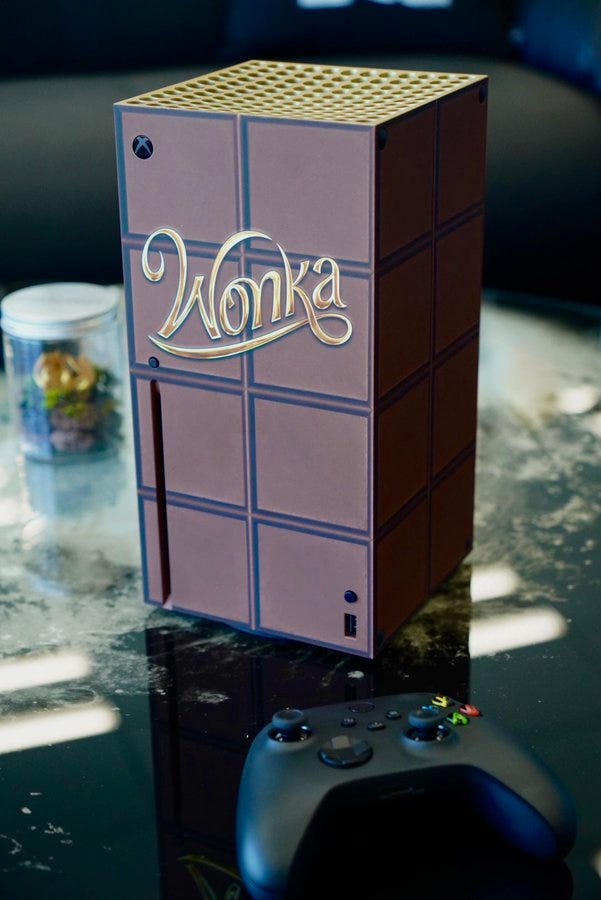
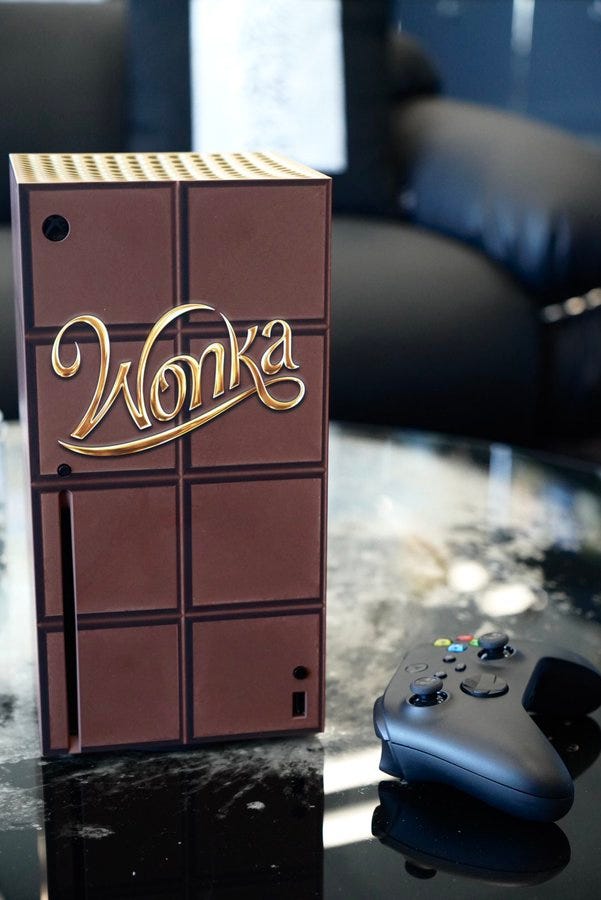
Trend Spotlight
In an Internet megaspace overflowing with trends and hyper-speed micro-aesthetics, it can be easy to feel overwhelmed by the pressure of commercial participation and finding your own personal style. In advocacy of “Slow Fashion”, I’m highlighting two trends I feel I can confidently incorporate into my wardrobe this autumn, and hopefully for many seasons to come.
Colored Tights
A quick way to make an outfit not-so-serious. I’m seeing these in a variety of textures, but primarily in blues and reds.
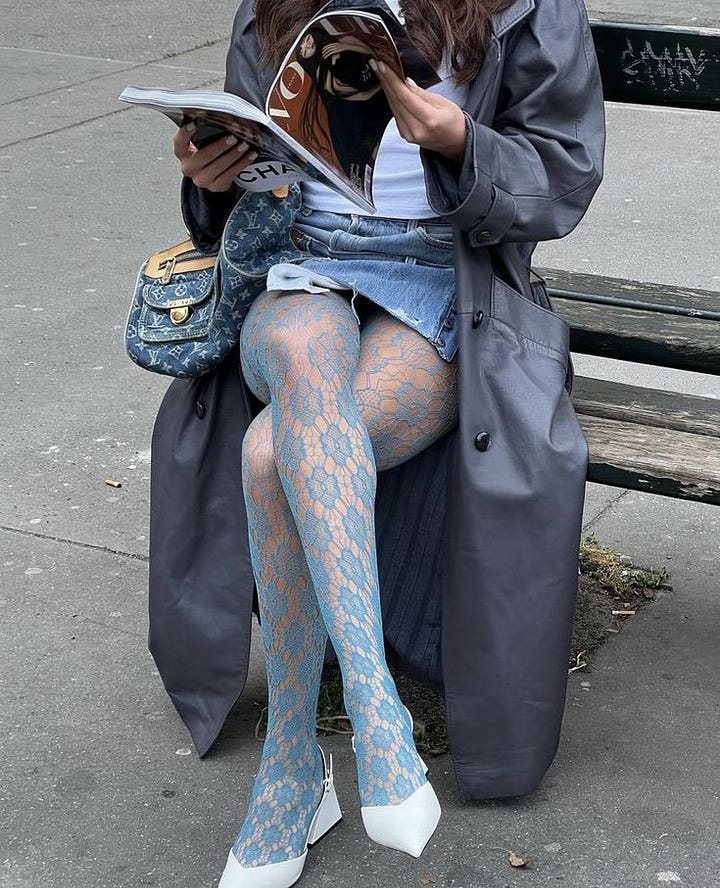
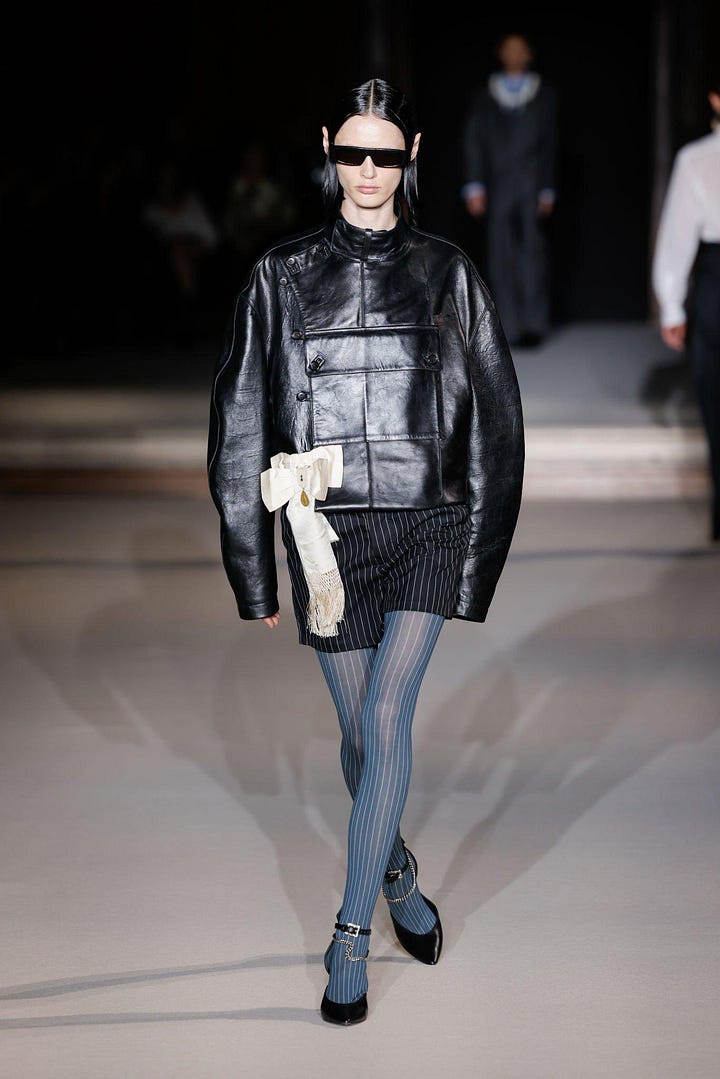
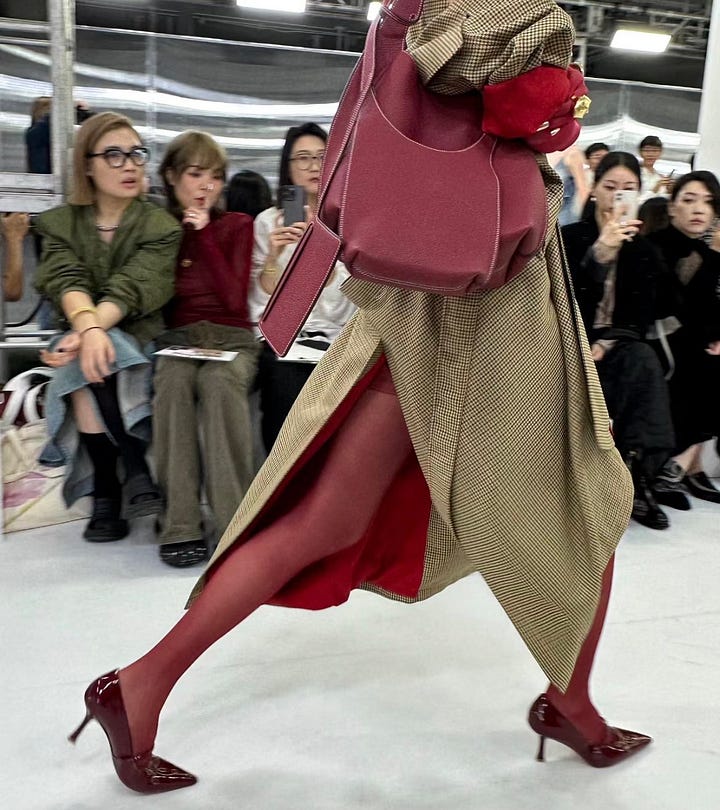
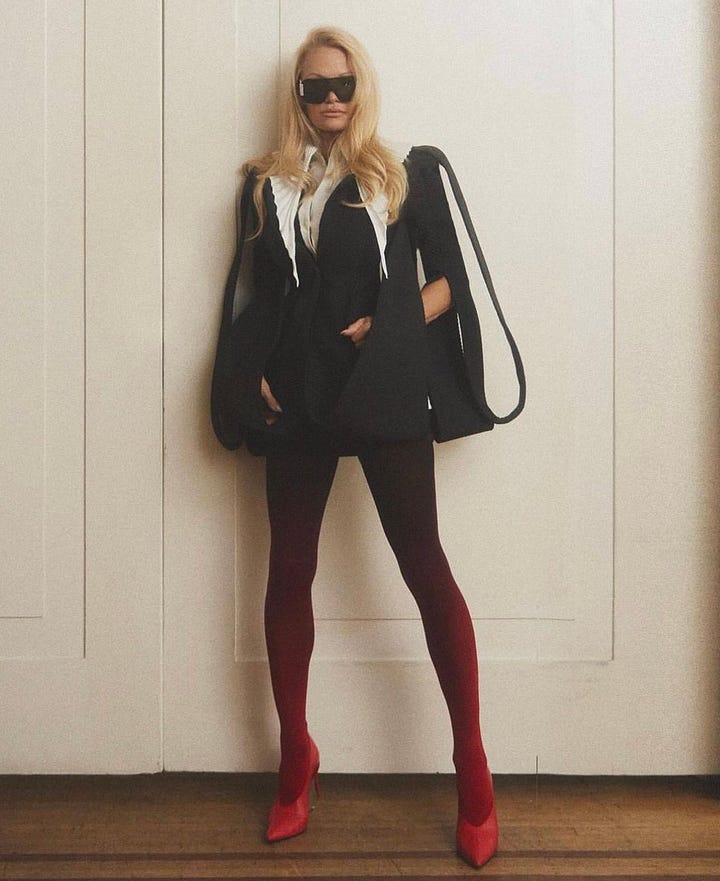
Bloomers (Spanx are OUT!)
Recently I saw someone opt for a pair of bloomers under their mini skirt as a modest alternative to the dreaded Spanx we grew up wearing underneath our Homecoming dresses. It was adorable, it was coquette, it was cheeky. I was welcomed into the world of bloomer outfit inspiration. I will be giving up Spanx forever!
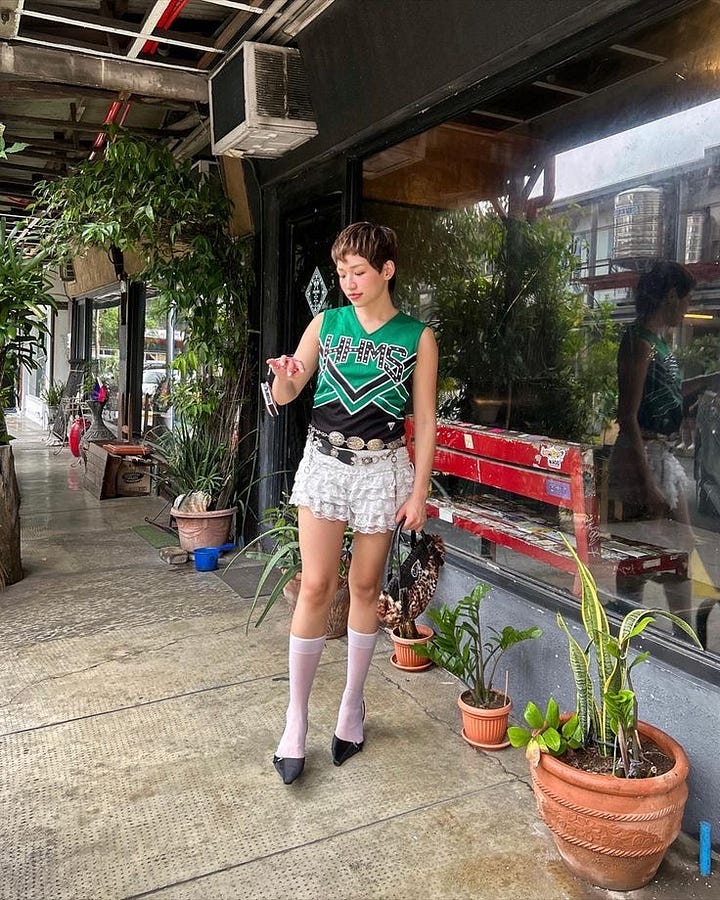
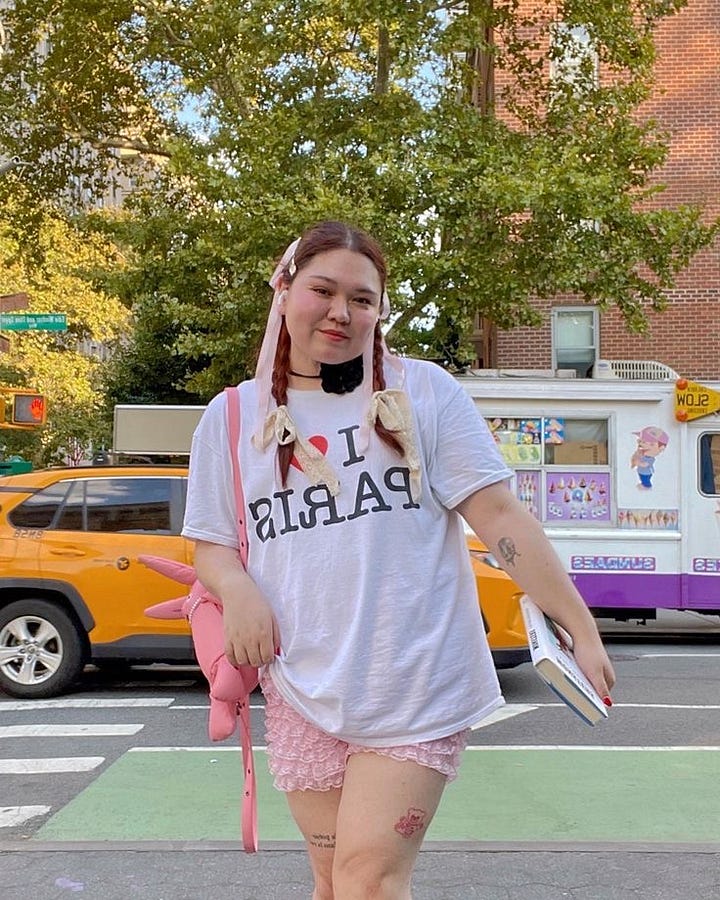

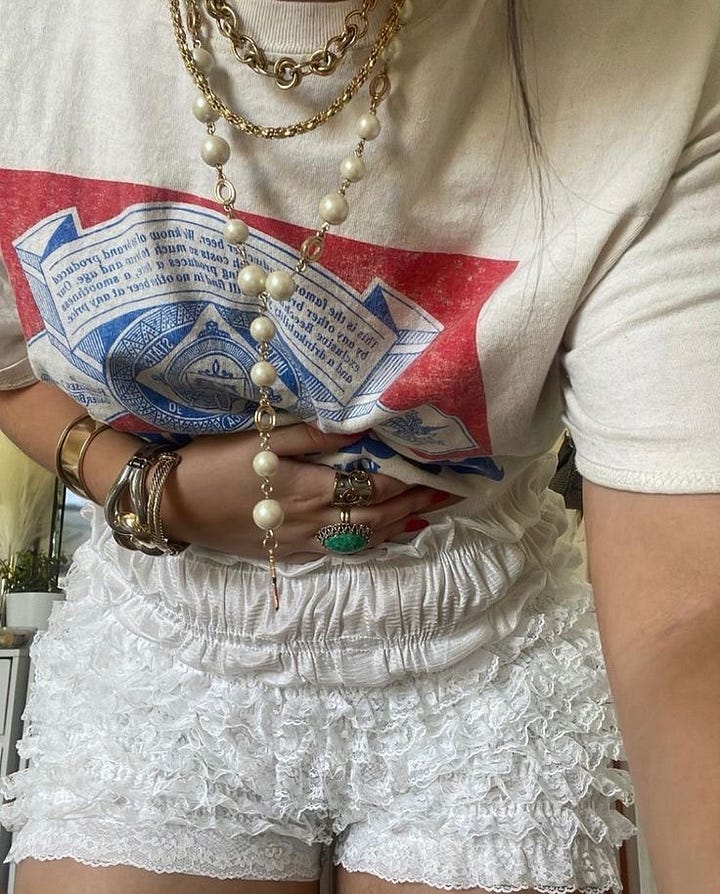
What I’m Attending
Saturday, December 2nd
The Cherokee Street Print Bazaar - St. Louis’s largest art holiday market.


Friday, December 8th
DIVA: a soulful, Brooklyn-style, old-school meets new-school disco party featuring DJ talent such as Tilda Sweatin, Makeda Kravitz, PBNJEFFY, and KC Mackey. Taking place at the St. Louis Broadway Boat Bar.
Saturday December 9th
PLAYTIME: A queer dance party and monthly residency by DJ Tilda Sweatin taking place at the St. Louis Crack Fox, with special guest DJ Michael Bishop.
What I’m Listening To
Jun Takahashi, fashion designer and creative force behind Undercover, takes to the airwaves for a series of extra special musical deep dives, selecting an hour of psych sounds from Japan and Korea, from the 1960’s to the present.
Bottoms Original Motion Picture Score is the soundtrack to the 2023 film of the same name directed by Emma Seligman, starring Rachel Sennott and Ayo Edebiri. The album was composed collaboratively between singer-songwriter Charli XCX and composer Leo Birenberg, further produced by George Daniel of The 1975 and A. G. Cook of PC Music.
Fashion Meme Wrap
A collection of the Internet’s Best
That’s all for now…
Stay tuned for the next issue!
x Oomz





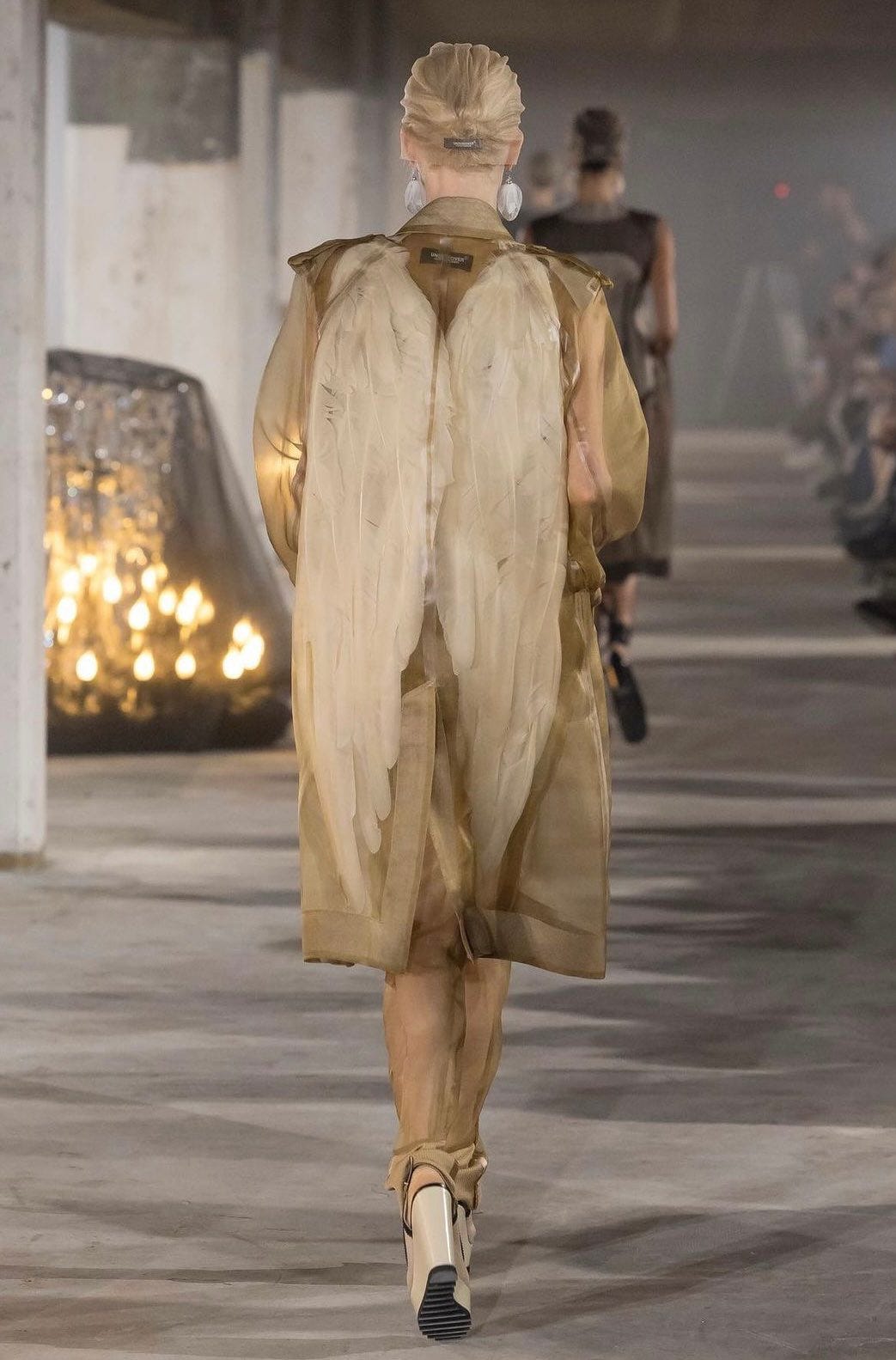
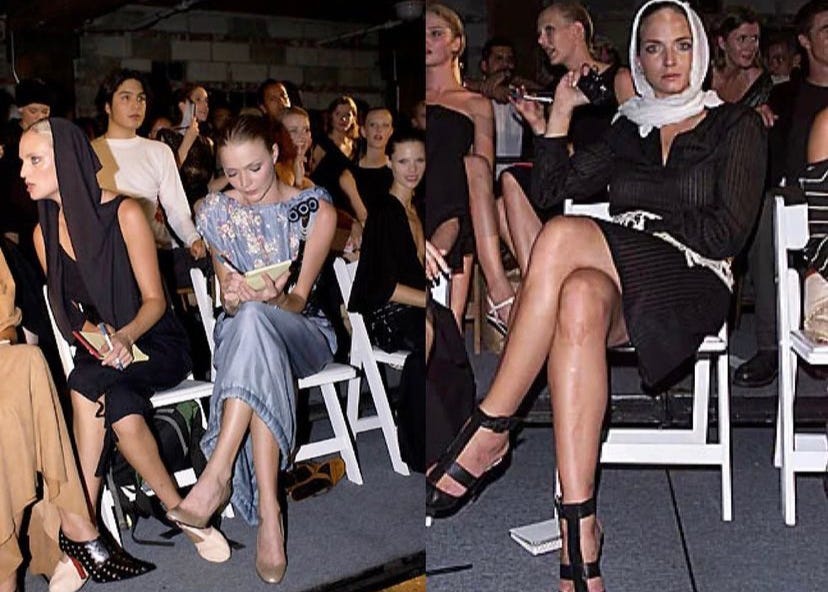
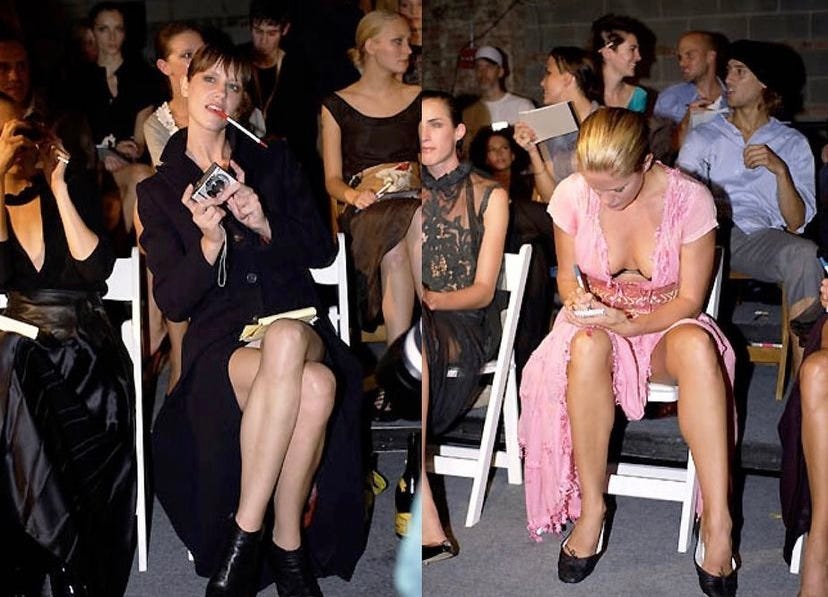
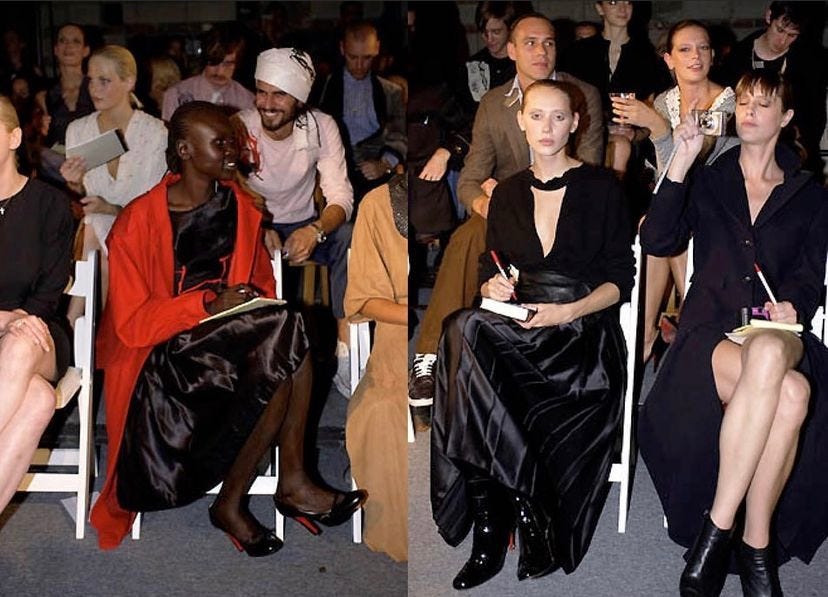
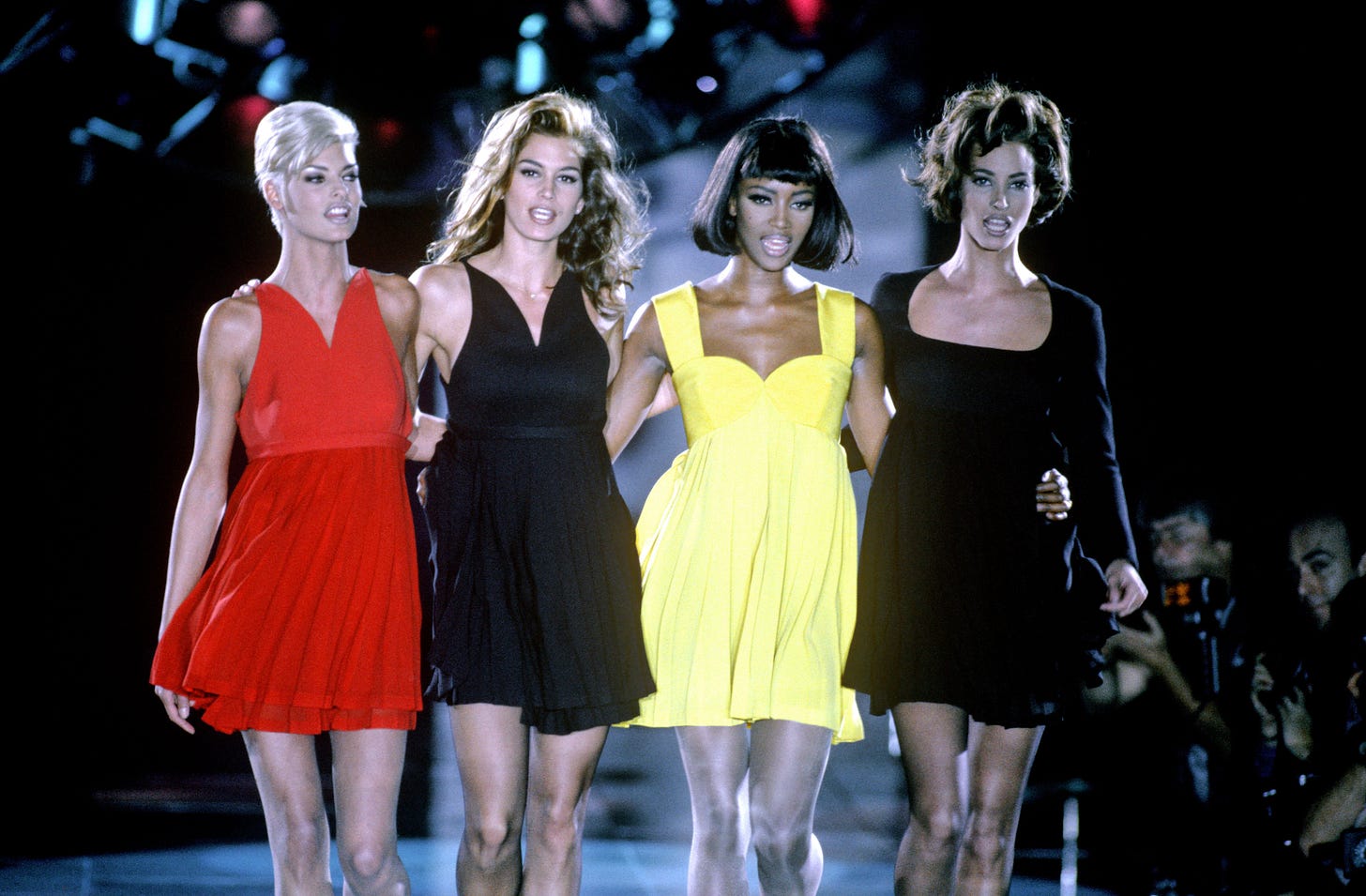
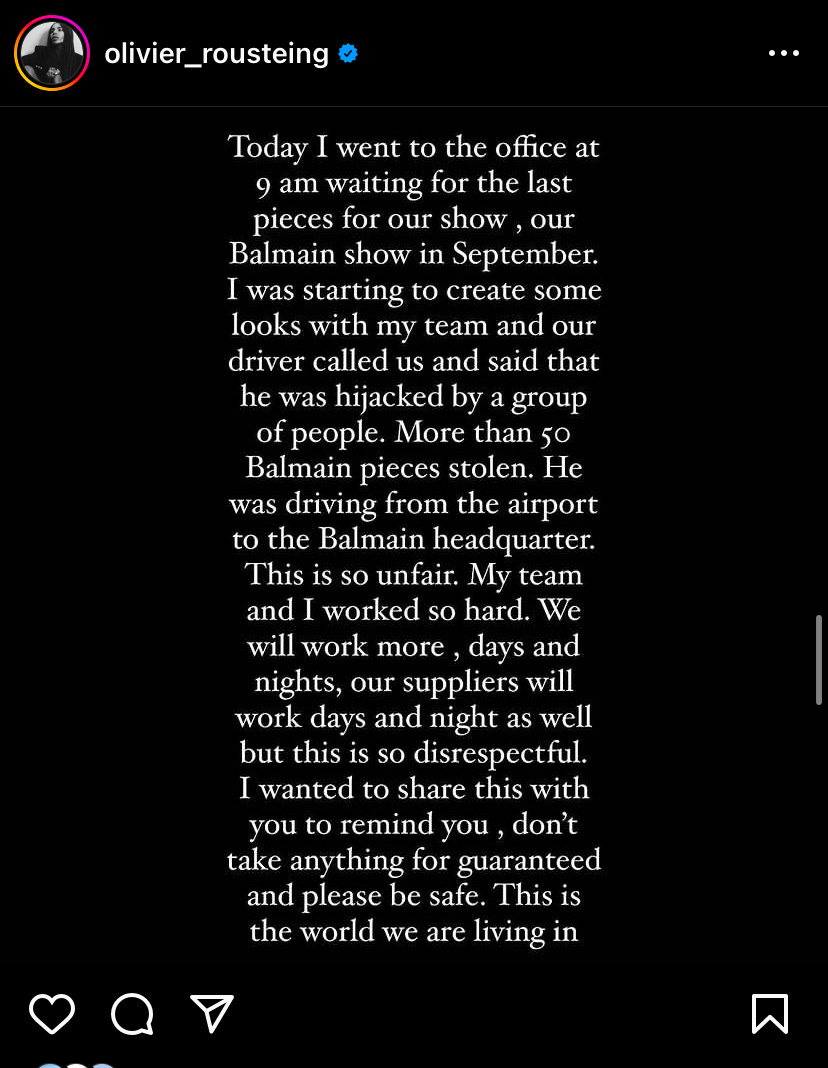




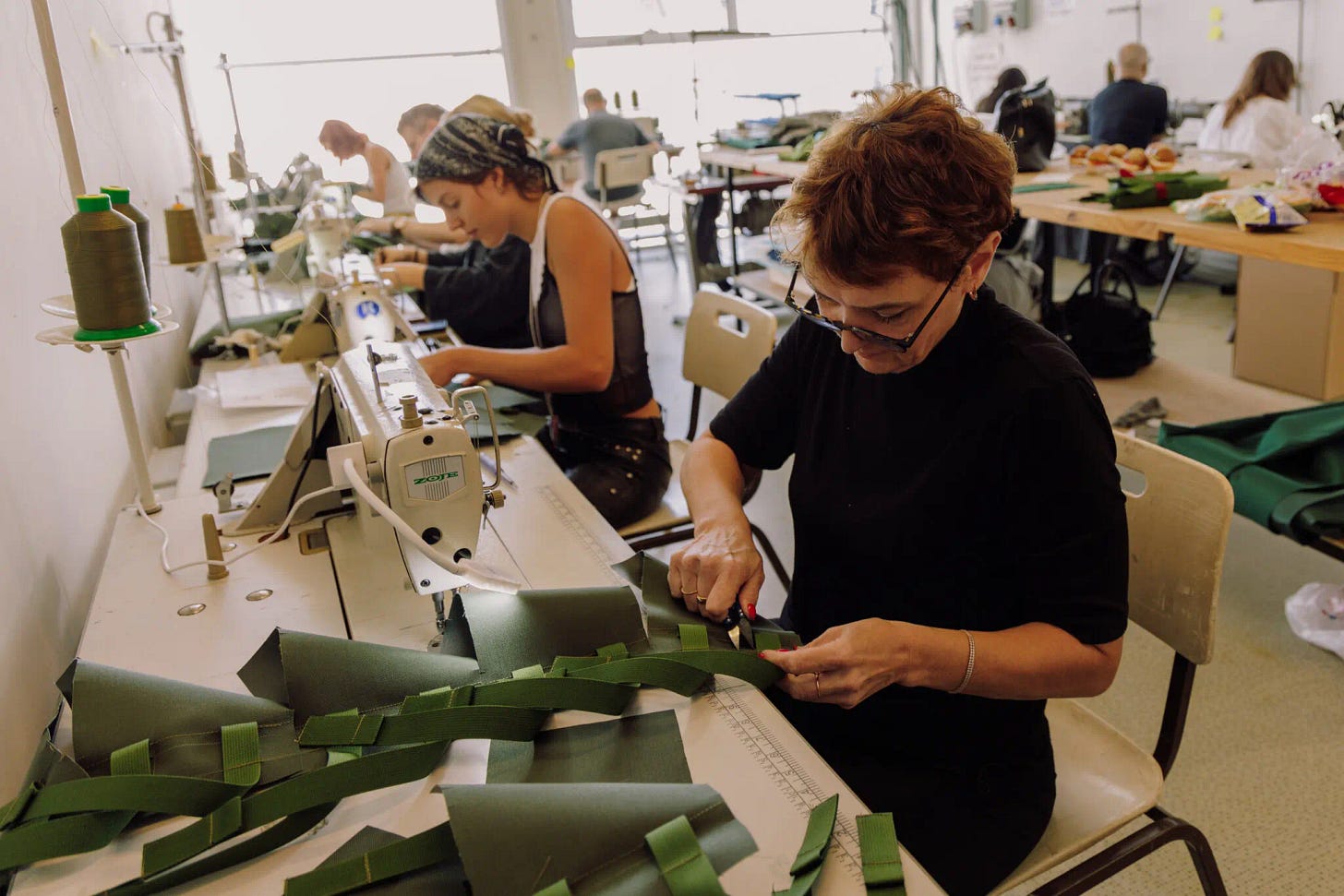

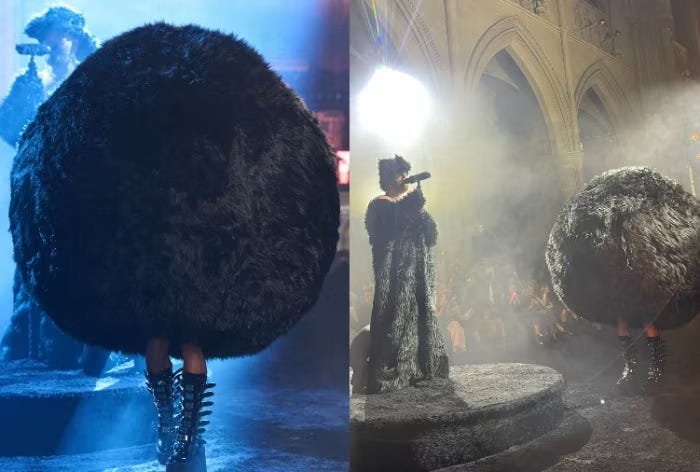

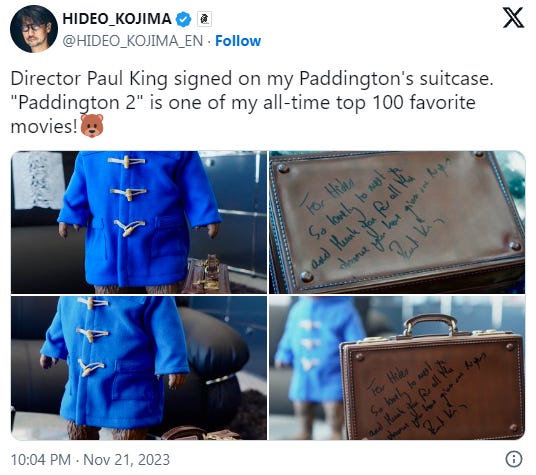



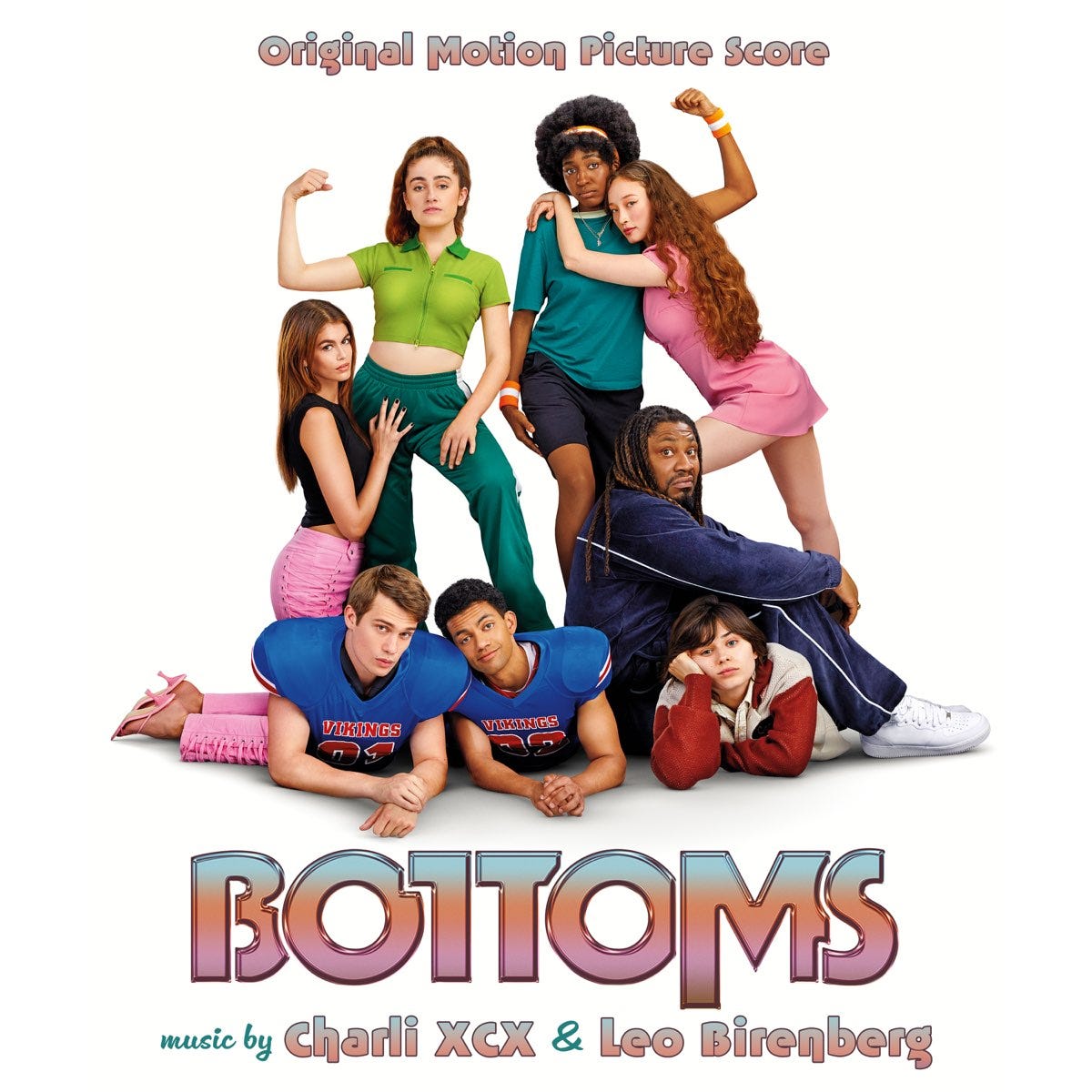
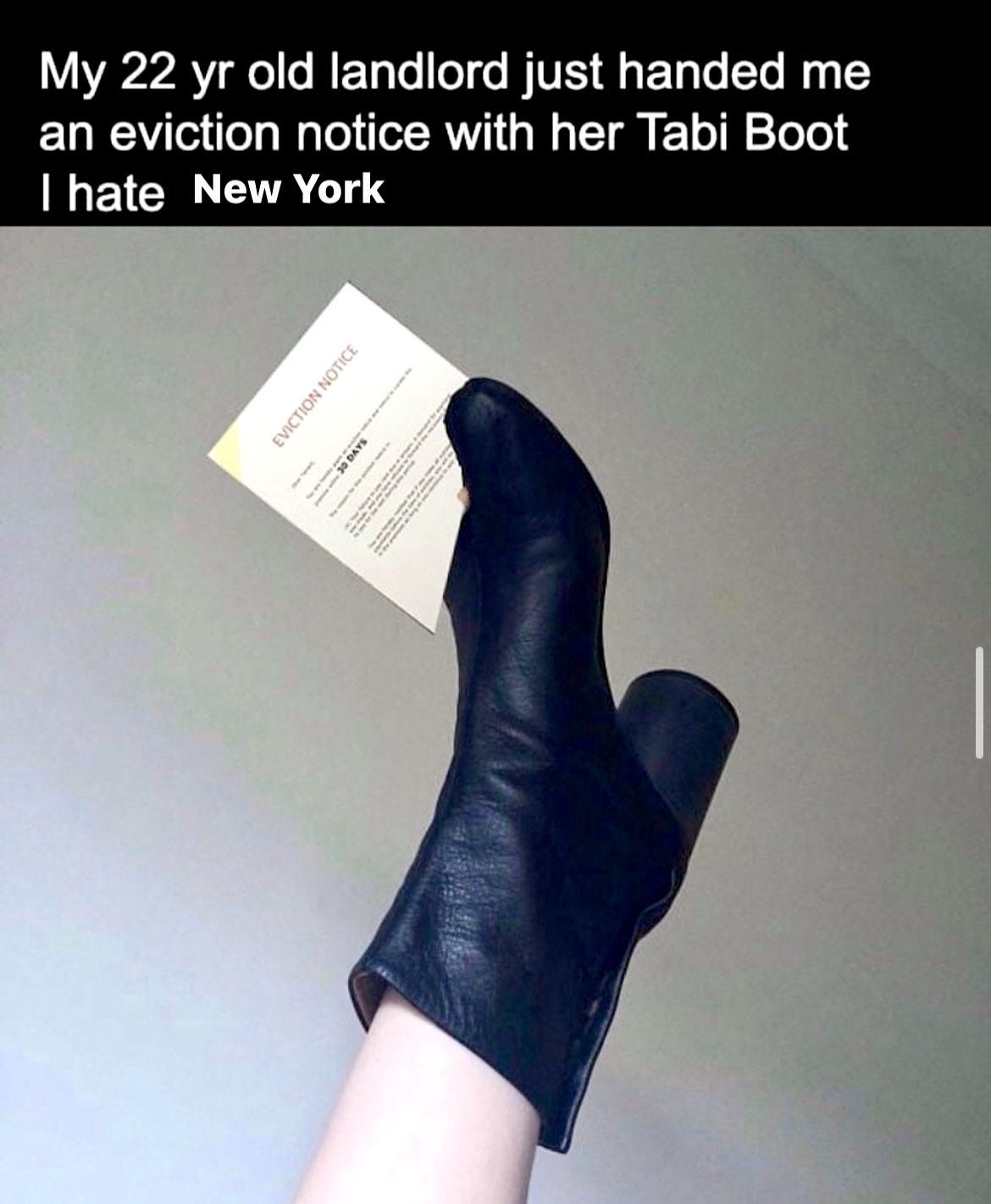


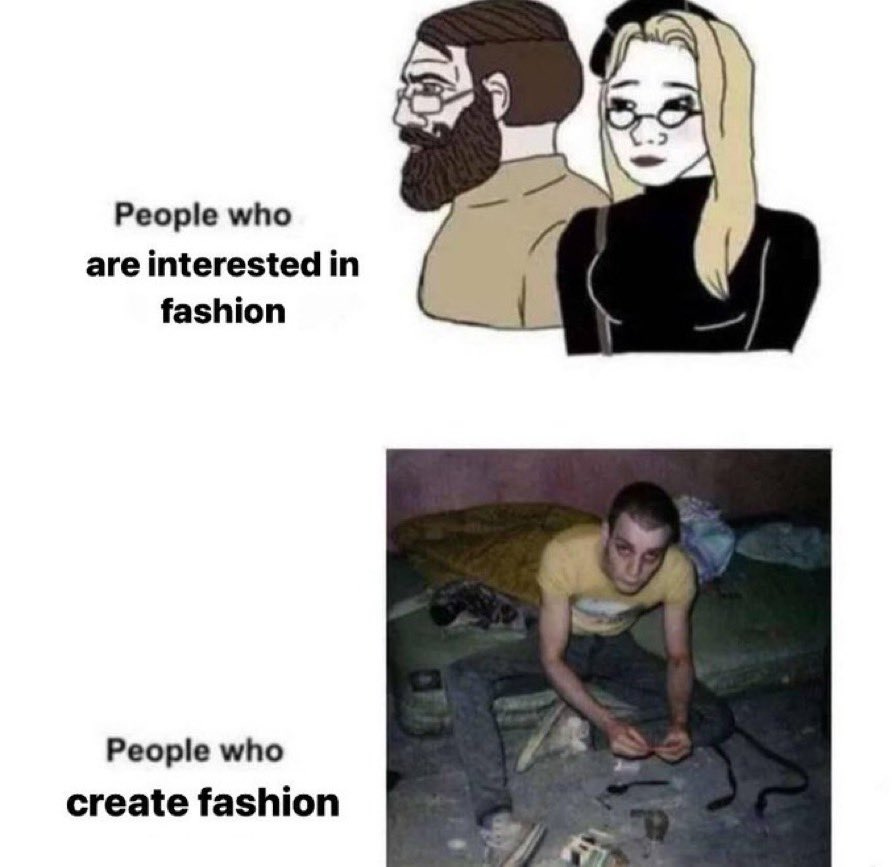


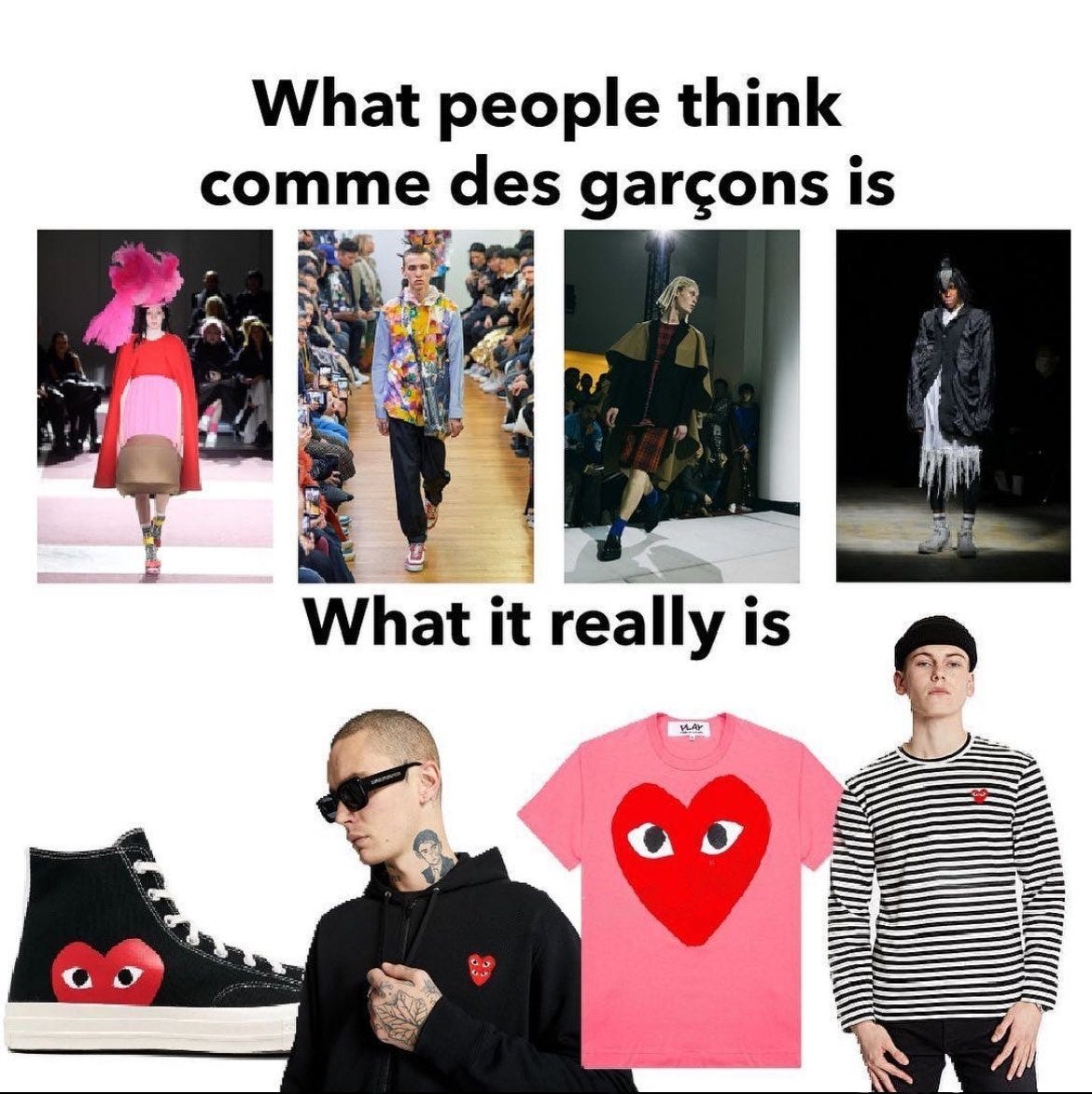
This is required reading